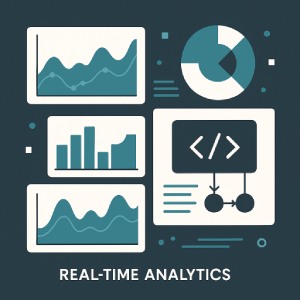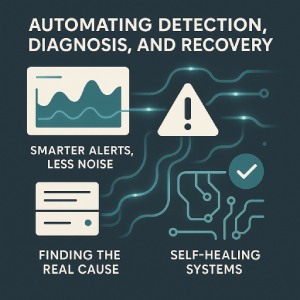How Real-Time Analytics Transforms CI/CD Pipelines

A CI/CD pipeline is only as reliable as the data that flows through it. Each stage, from the first line of code written to pushing a feature into production, yields useful information such as build times, test results, resource utilization, and deployment time. Without analytics, that information is just there. But with real-time analytics, each number becomes something meaningful.
Teams are able to spot issues immediately when they occur when they monitor pipelines in real-time. For instance:
When teams monitor pipelines live, they catch problems the instant they occur. For instance:
- If a build suddenly starts taking twice as long as usual, the team can be alerted immediately.
- When specific tests continuously fail, the system can alert them before they hold up a release.
- When deployment times are longer, the developers can directly get into configuration or network trouble.
This kind of live feedback ensures that a simple automated process is refined and becomes a smarter and self-aware pipeline that responds and reacts in real-time. The developers will be able to act immediately rather than wait until after the reviews have been done.
Making CI/CD Smarter with Real-Time Data
Real-time data is not just about visibility but about making smarter decisions. When integrated into CI/CD pipelines, it assists the teams to respond immediately and continuously evolve over a period of time. This is how it can be of value in three important ways:
Predictive Issue Detection
Real-time analytics learns what “normal” looks like across builds, tests, and deployments. Thus, when the performance begins to drift, maybe the build slows or the error rate soars, the system sends out a signal before the issue becomes worse. This predictive layer assists the teams to be proactive about the issues rather than running about trying to correct them later in the process.
Smarter Resource Allocation
Analytics tools can help track the utilization of resources over the entire pipeline and automatically distribute workloads. For example, when one test suite is lagging due to a lack of CPU or memory, the system can divert the tasks to free nodes. With time, it "learns" the most effective way of resource allocation.
Optimized Testing
All the builds have to be able to run every single test. The real-time analysis is able to indicate which tests will best detect new bugs by looking at their historical patterns. This form of testing based on risk reduction reduces redundant processes and reduces feedback time.
Automating Detection, Diagnosis, and Recovery
DevOps is based on automation but analytics is what makes it intelligent. With real-time data, the pipelines not just simply detect problems but understand how to react to them.

Smarter Alerts, Less Noise
Older methods of monitoring bomb teams with endless notifications. Real-time analytics provides context and clarification, categorizing similar cases and highlighting what is actually important. Instead of seeing “Build failed,” developers might get “Build failed due to new dependency in module X.” That simple detail saves time and frustration.
Finding the Real Cause
Analytics tools are able to trace the cause-and-effect relationship of problems by linking metrics, logs, and traces. As an example of this, in case CPU usage soars up during deployment and memory rises in a container then it can be traced back to a configuration error in the system.
Self-Healing Systems
Automatic recovery in advanced setups can be done with analytics-driven automation. In the event that a new deployment makes response times sluggish, the system is able to roll back to the previous stable version or reroute traffic instantly.
Building Collaboration Across Dev, QA, and Ops
Real-time analytics is not just about technology, but about people. One of the biggest wins of DevOps is bringing development, QA, and operations together under shared goals.
When all teams are viewing the same dashboards, they share the same context. Everybody knows where the pipeline stands, what is breaking, and why. QA can identify data flaky tests, developers can track the bug down to a specific commit and DevOps can visualize the change in performance in the deployment.
Feedback loops are also optimized with analytics. The teams can examine performance data, test outcomes, and incidents after every release to see what worked and what did not. In the long run, this practice will establish a continuous learning culture where every release is built on the success of the previous one.